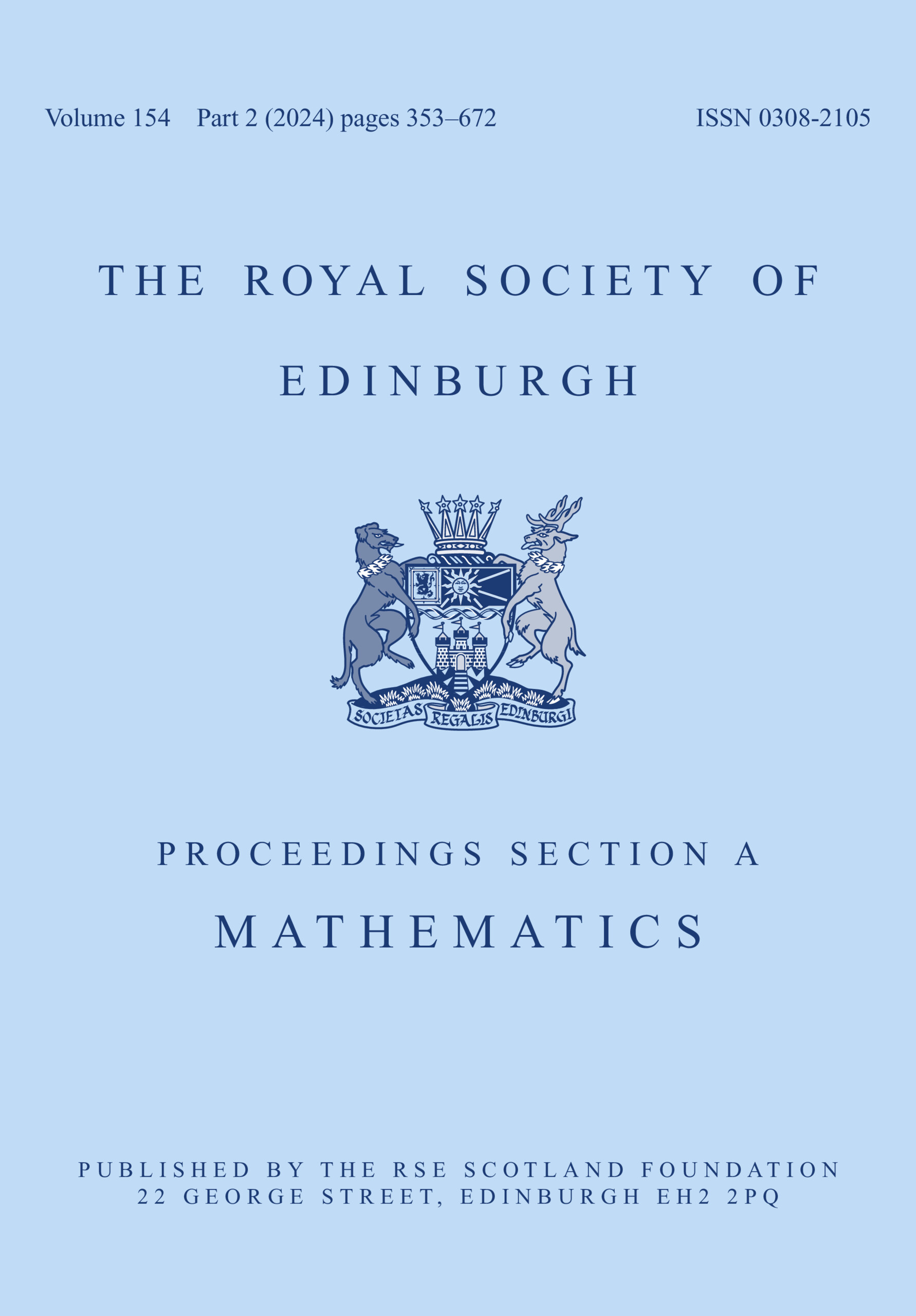Article contents
Global centres in a class of quintic polynomial differential systems
Published online by Cambridge University Press: 11 April 2024
Abstract
A centre of a differential system in the plane $ {\mathbb {R}}^2$ is an equilibrium point $p$
is an equilibrium point $p$ having a neighbourhood $U$
having a neighbourhood $U$ such that $U\setminus \{p\}$
such that $U\setminus \{p\}$ is filled with periodic orbits. A centre $p$
is filled with periodic orbits. A centre $p$ is global when $ {\mathbb {R}}^2\setminus \{p\}$
is global when $ {\mathbb {R}}^2\setminus \{p\}$ is filled with periodic orbits. In general, it is a difficult problem to distinguish the centres from the foci for a given class of differential systems, and also it is difficult to distinguish the global centres inside the centres. The goal of this paper is to classify the centres and the global centres of the following class of quintic polynomial differential systems
is filled with periodic orbits. In general, it is a difficult problem to distinguish the centres from the foci for a given class of differential systems, and also it is difficult to distinguish the global centres inside the centres. The goal of this paper is to classify the centres and the global centres of the following class of quintic polynomial differential systems
 .
.
Keywords
MSC classification
Information
- Type
- Research Article
- Information
- Copyright
- Copyright © The Author(s), 2024. Published by Cambridge University Press on behalf of The Royal Society of Edinburgh
References
- 1
- Cited by


